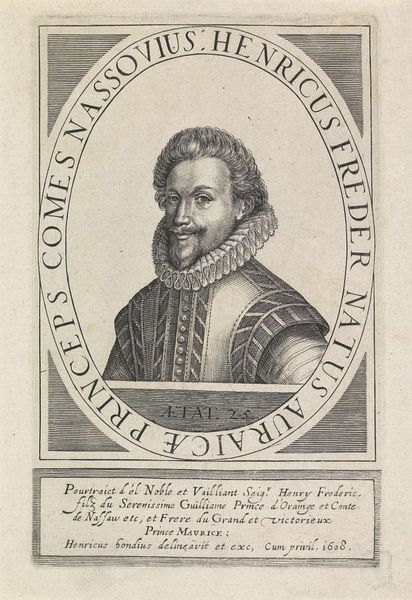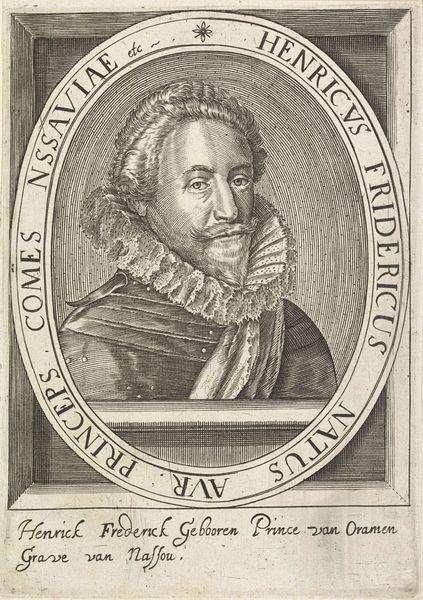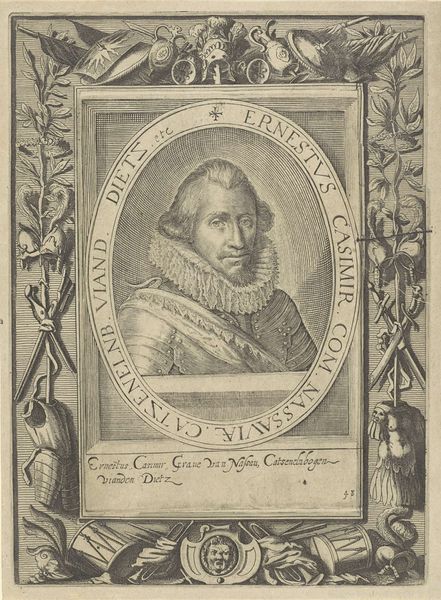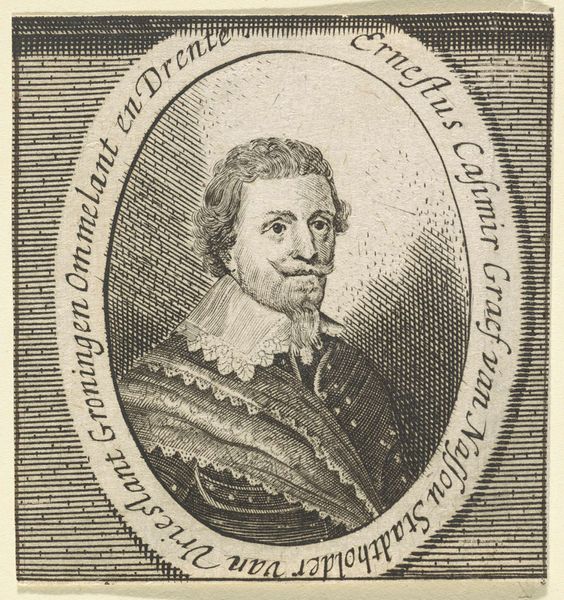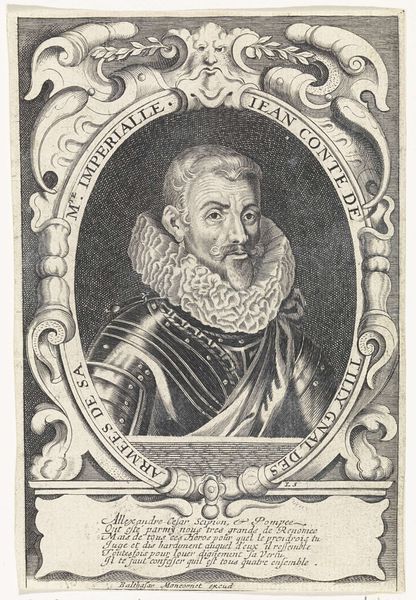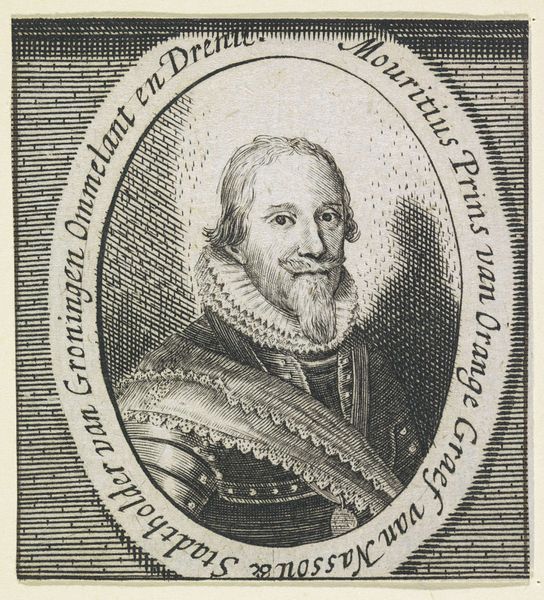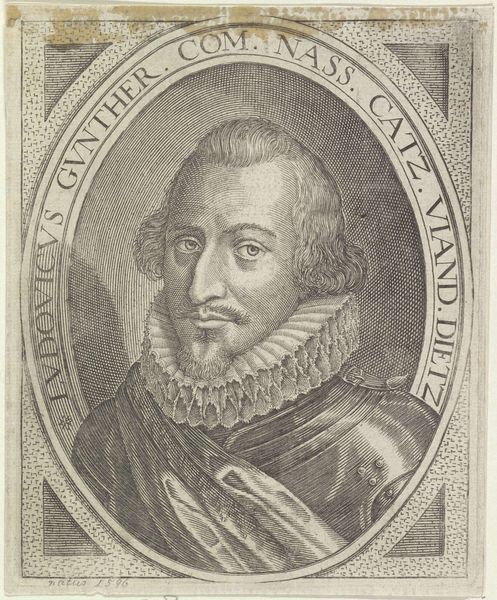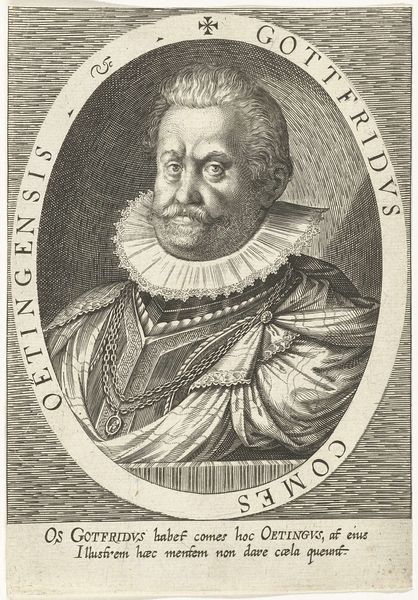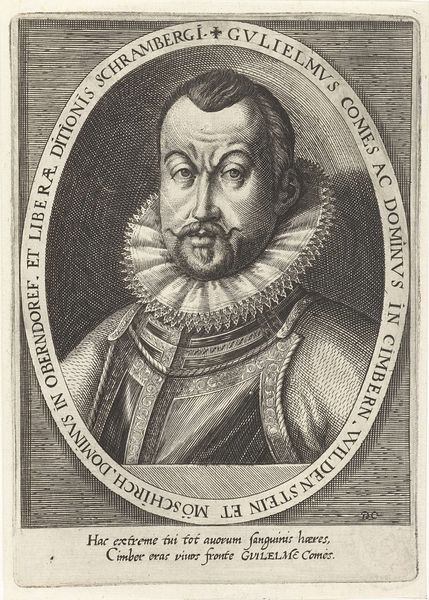
print, engraving
#
baroque
# print
#
old engraving style
#
portrait reference
#
portrait drawing
#
engraving
Dimensions: height 125 mm, width 107 mm
Copyright: Rijks Museum: Open Domain
Curator: Looking at this engraving, dating from the 17th century and currently held in the Rijksmuseum, I'm struck by its formality. This is a portrait of Lodewijk Gunther, Count of Nassau. The details achieved through the engraving technique, even without color, feel incredibly detailed, almost hyper-realistic for its time. Editor: It definitely possesses an air of gravity, almost somberness. The rigid lines and the high contrast enhance the subject’s stern gaze. The circle around him makes him almost float…detached from time. Do you think the portrait’s power is amplified through this separation? Curator: Absolutely. Circles frequently symbolize eternity and completion, which elevates his stature but also almost entombs him in history, like a coin of an ancient king, emphasizing dynasty. The detailed armor gives him weight but the roundel containing him feels ephemeral by contrast. Editor: Indeed. And thinking historically, portraits like these were crucial tools in projecting power, especially within aristocratic circles. Lodewijk Gunther is very deliberately presented here as a strong military leader. What about the choice of material? Why print? Curator: Prints offered a way to disseminate imagery, allowing wider distribution and control. Though a painted portrait held unique aura of presence and authenticity, this engraved likeness could propagate, fixing his legacy for the common person as much as nobility. Editor: A printed image definitely extends accessibility of the powerful. Is there an inscription to reinforce his place in the historical and political narrative of the era? Curator: There is, along the lower margin. Although I am missing the Classical literacy to instantly read the Latin, this inscription, the lettering mirroring his round containment, adds an important contextual layer… perhaps it emphasizes familial legacy or martial successes as implied by his armour? Editor: It seems almost contradictory; contained yet projecting authority through reproducibility. This image sparks questions regarding the subject's place in a political system that relied on these constructed portrayals to broadcast its power. Curator: Precisely. It is that interplay of public and private symbolism, I think, that makes this engraving particularly resonant today. Editor: Yes, seeing it through a modern lens makes us examine the motivations, cultural conditions, and semiotics that elevate and preserve the memory of those in positions of power, for their time and for future reflection.
Comments
No comments
Be the first to comment and join the conversation on the ultimate creative platform.
